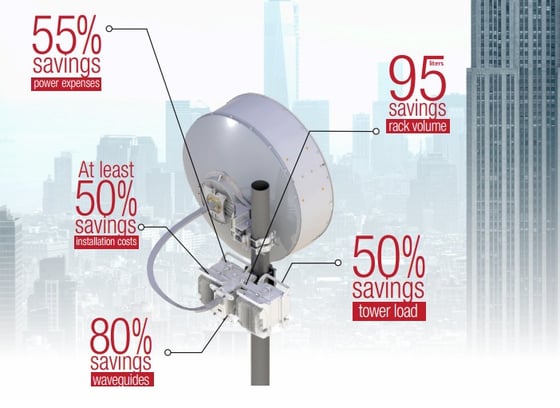How far do operators have to go to satisfy their current subscribers and entice new business? Do you need to spin cartwheels? Because, let’s face it: users aren’t so loyal anymore. In fact, they’ll actually leave you at the drop of a hat, and not only because of price: according to an Analysys Mason study on the connected consumer mobile market[1], while price may be the key driver of churn for most age groups, network factors -- notably speed -- were more important for the youngest respondents, whose expectations for quality of experience are very high.
Speed, and of course, capacity. Which is only growing. Today, we’re looking at 500M-1Gbps per link capacity on the metro backhaul. But with 4G/LTE adoption, demand will rise, requiring 1.5-4Gbps over the next few years.
What effect does this have on your current wireless infrastructure? To achieve such ultra-high capacity, you have to aggregate 4, 6, or even 8 carriers within your links, relying on narrowband (e.g., 28MHz, 40MHz, or 56MHz) channels to accommodate licensed microwave spectrum. You could try to work around this issue by using very wide 250MHz or 500MHz channels in ultra-high frequency E-band. But then your wireless backhaul range remains limited. And you defeat the purpose.
Why can’t a multi-carrier solution solve this capacity crunch? After all, it’s robust enough to accommodate LTE’s higher bandwidth requirements. For a metro network, however, this approach would be prohibitively expensive, requiring significant shelter/tower space and much more power consumption. It would also be excessive because these solutions have been designed for the long haul, with over-engineered RF features that provide more gain than needed.
You may think there are no viable ways to solve the metro capacity crunch. But there is one: multi-core radios. [Tweet this] This solution, based on breakthrough technology, can lift your network bandwidth to the ultra-high capacity of a multi-carrier solution while significantly enhancing operational efficiency:
- up to 80% less waveguide costs
- 55% less power cost
- 1/2 the installation cost
Compact, low-powered, and easy to install, these radios can immediately provide 4Gbps radio capacity, using only four multi-core units for as many as eight carriers per link, over any frequency band between 6-42GHz.
Find out about Ceragon’s breakthrough multi-core radio technology and how your customers can enjoy smooth video/multimedia streaming from anywhere, without interruption.
[1]To read a synopsis of the report, copy, and paste the following link: http://www.analysysmason.com/Research/Content/Reports/connected-consumer-mobile-Mar2015-RDMM0/sample-TOC/

